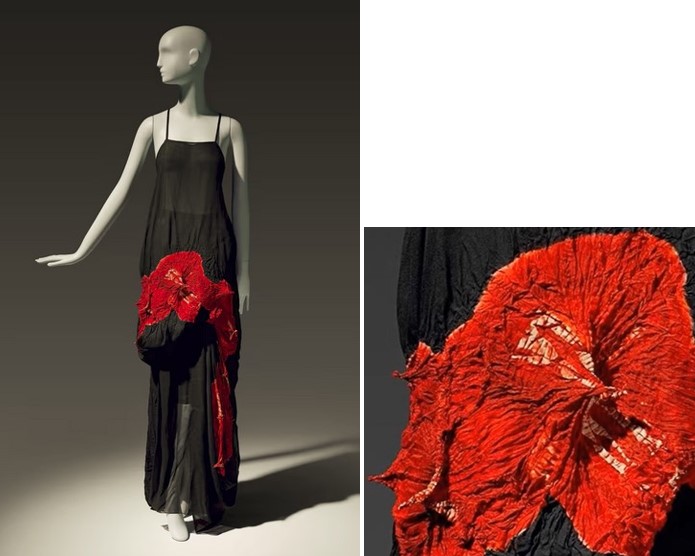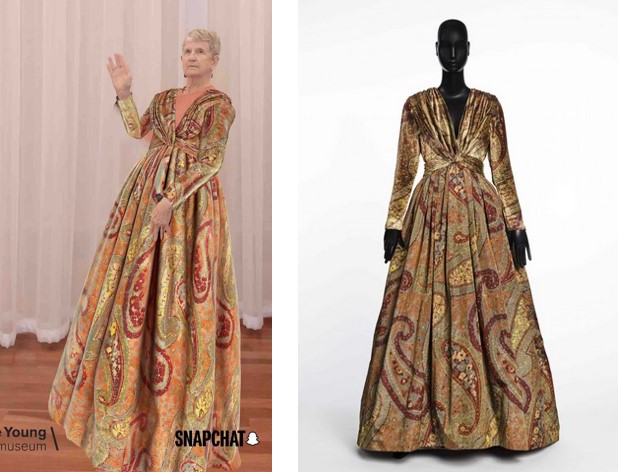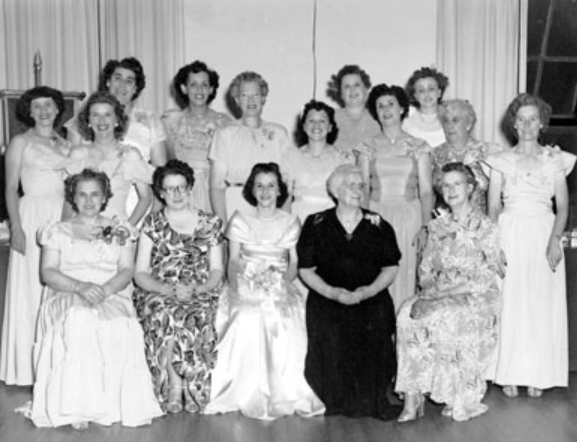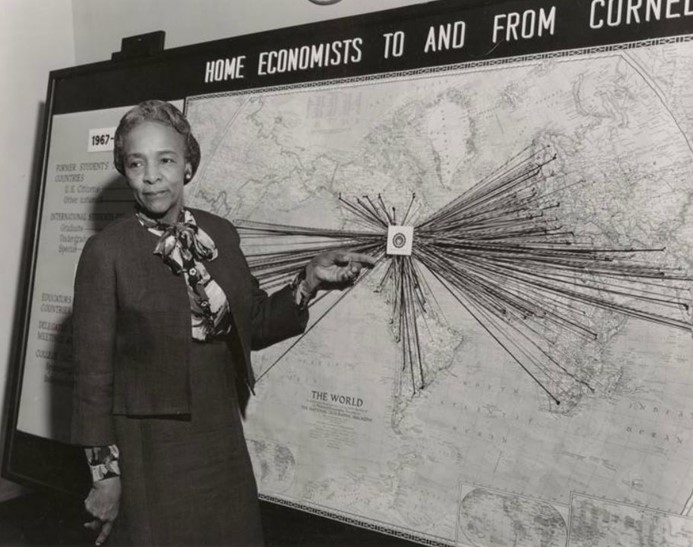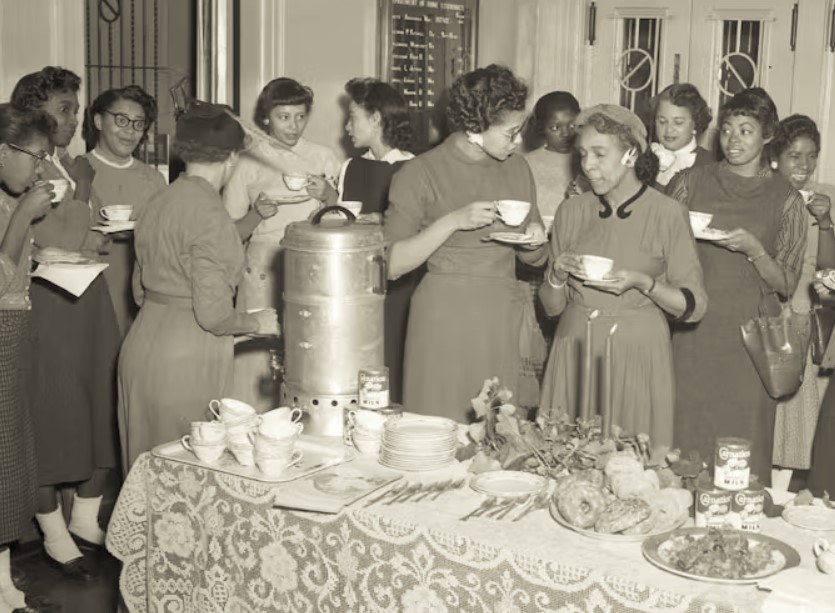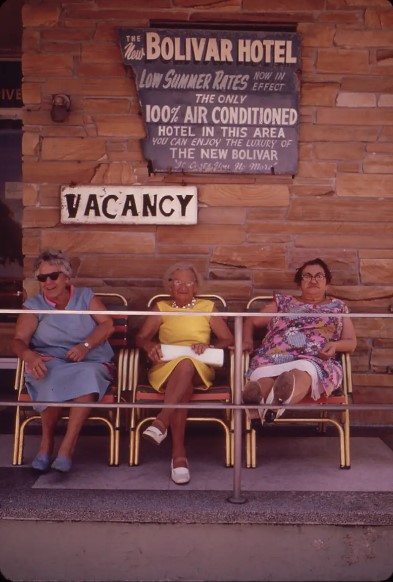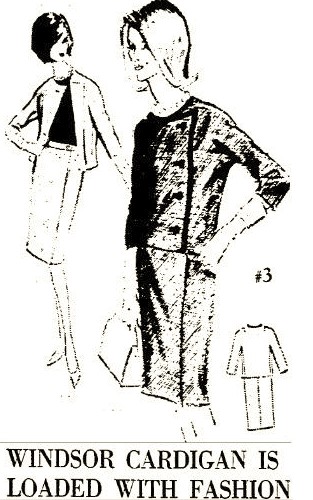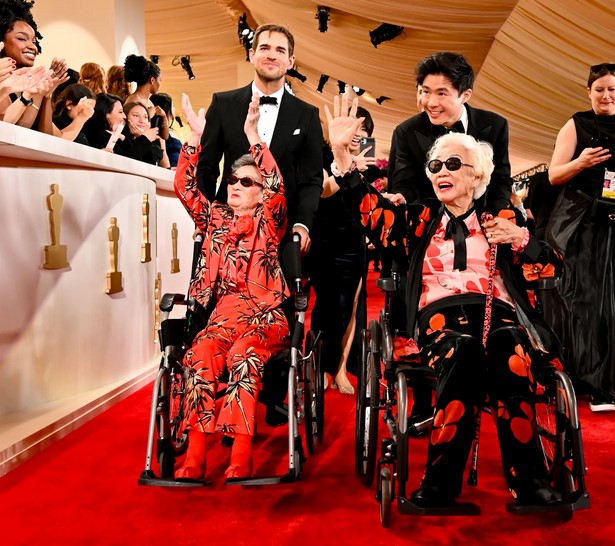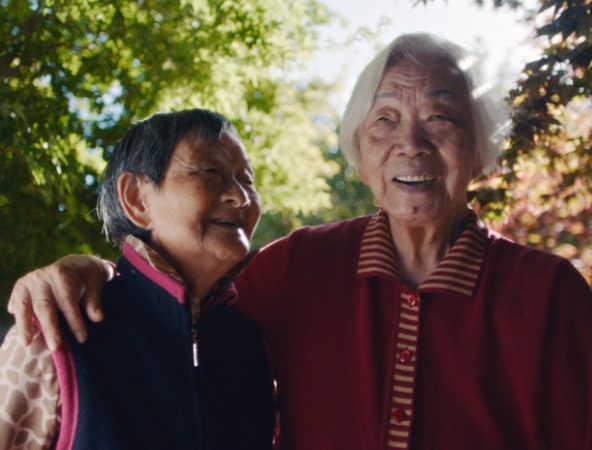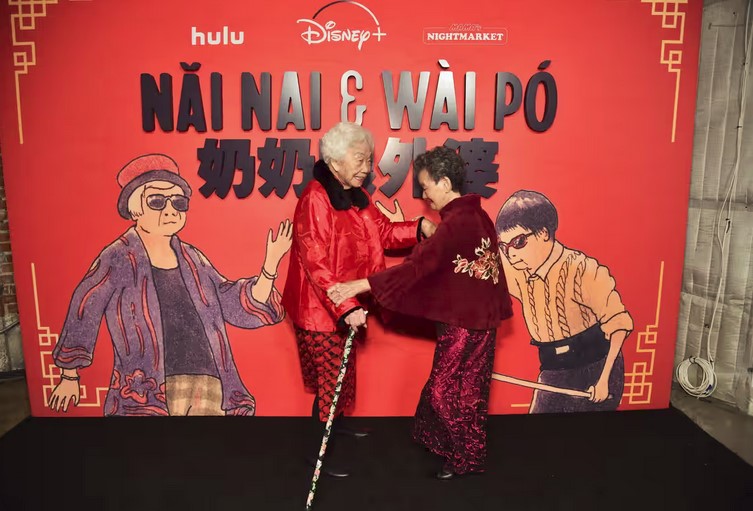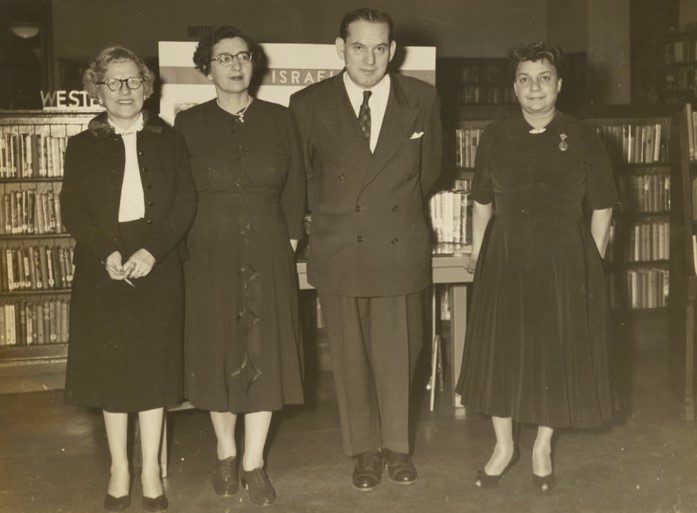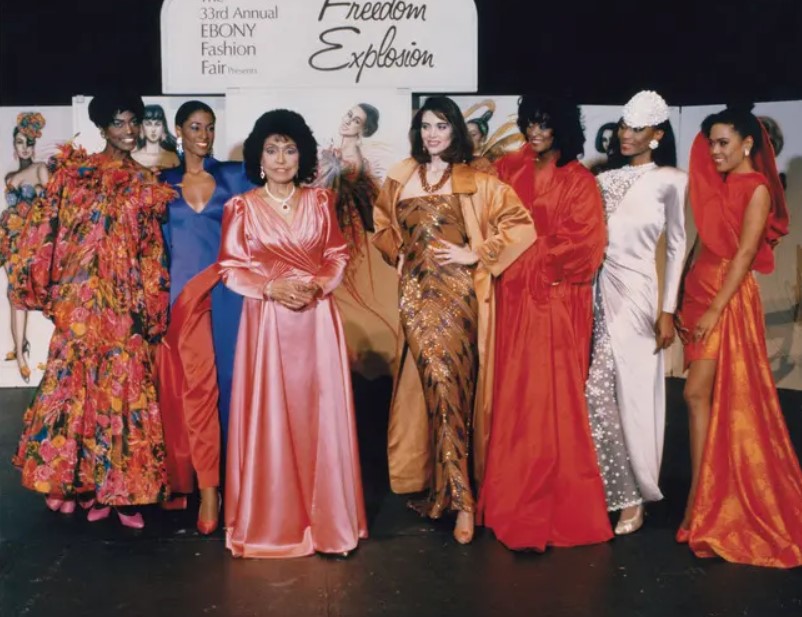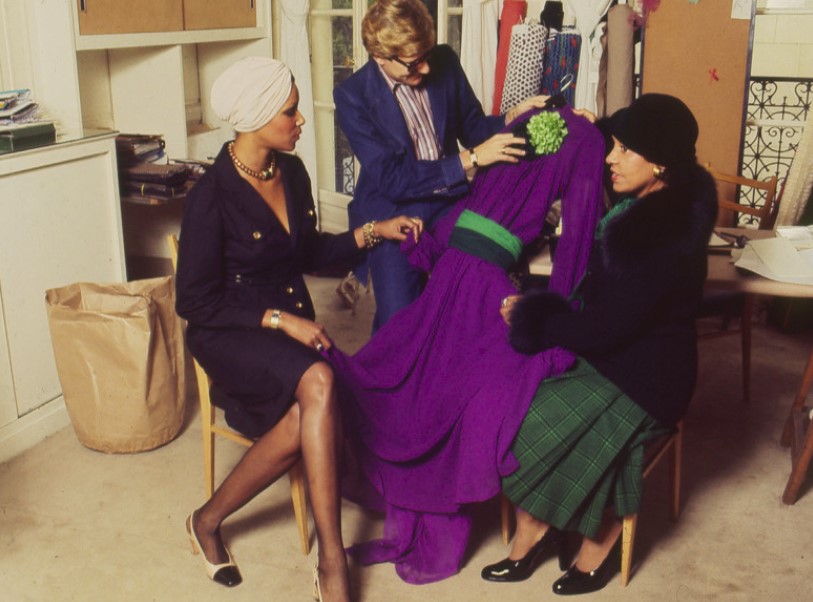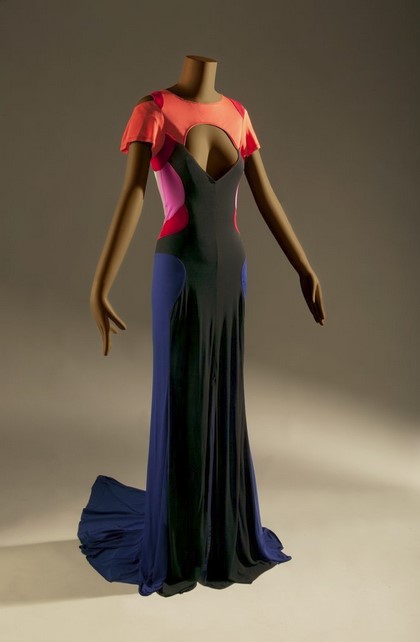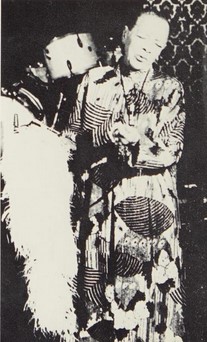Look up the phrase “grande dame” in a dictionary and the definition you will find is “woman of influence.” Certainly the word also implies ages–no one would think to call Taylor Swift a grande dame. In my research the phrase also implies a hint of eccentricity. Consider this comment in a 1935 Vogue article, “When you get to the age where current fashions bore you and seem to have very little relation to you, do as you please. Be picturesque, dramatic, and eccentric—make the most of your opportunity of being a grande dame.”
Dodie Rosekrans of San Francisco was often called a grande dame in the press. Born into a wealthy family, she married twice into even more wealth. She and last husband had a house in San Francisco, an estate outside the city, and villas in Paris and Venice. The couple distributed their money generously to support San Francisco art institutions and others in New York and France.
Rosekrans had a unique fashion sense. She wore up-to-the-minute designer creations, often the ones you see on the runway and imagine that no one on earth could wear. In the words of John Galliano, whose career she helped launch, “She always wants to buy the pieces straight off the runway, so her collection of Dior and Galliano are all one-of-a-kind, show-stopping pieces, whereas most other couture clients go for more discreet pieces.”
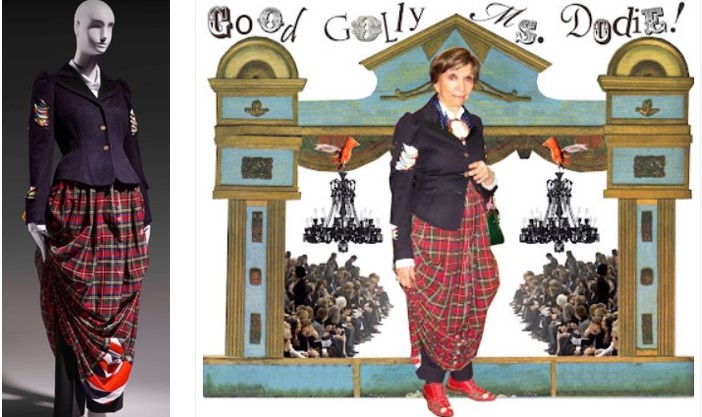
When she tired of her clothes, she donated them to the de Young Museum. Her unique designer pieces formed the core of the more avant-garde part of the San Francisco exhibit. She wasn’t afraid to mix and match. The outfit on the left, part of the exhibit, combined a Galliano jacket with a Comme de Garcon skirt—not a combination I would think of. The collage on the right shows that she actually wore it, along with a giant neck piece and bright red shoes.
Dodie Rosekrans died in 2010, but her style lives on at the de Young museum. Are you inspired?



